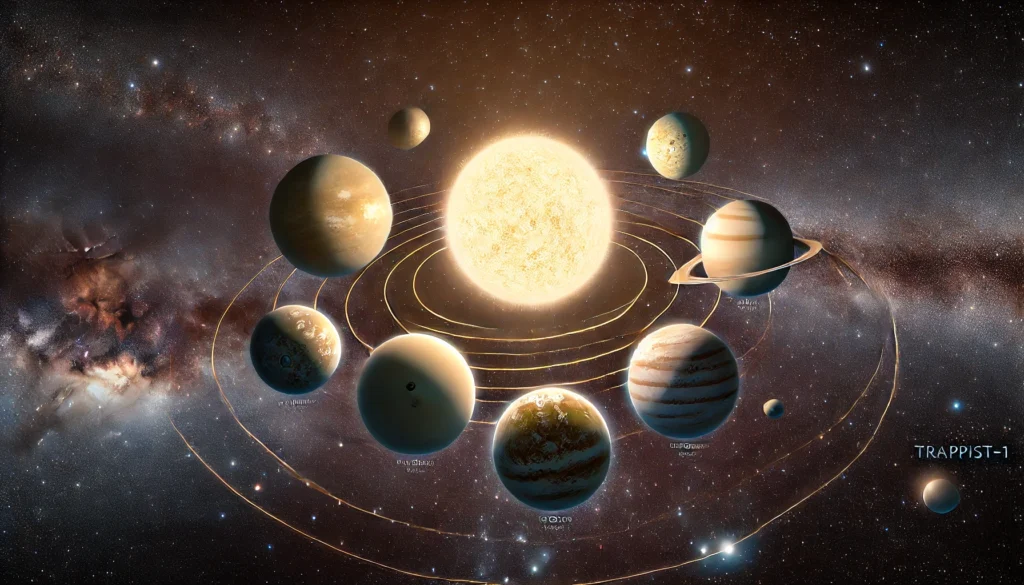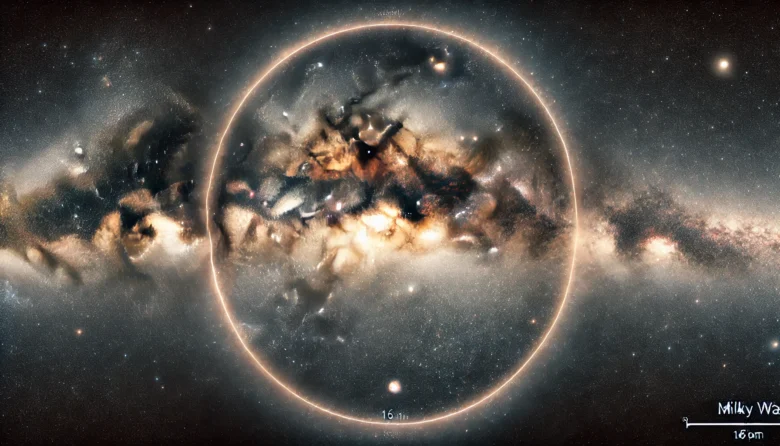Have you ever looked up at the night sky and wondered if we’re truly alone in the universe? The vastness of space, with its countless stars, makes you question whether there might be other forms of life out there. This curiosity drives one of the most exciting scientific endeavours of our time: the search for extraterrestrial life. At the heart of this quest lies the study of exoplanets—planets that orbit stars outside our solar system. In this blog, we’ll explore the role of exoplanets in the search for extraterrestrial life, diving into why these distant worlds have captured the imagination of scientists and the public alike.
The Discovery of Exoplanets: A New Frontier
Before we delve into the specifics of exoplanets, let’s take a step back and consider how we got here. The first confirmed discovery of an exoplanet was in 1992 when astronomers found two planets orbiting a pulsar (a highly magnetized rotating neutron star) named PSR B1257+12. This discovery was groundbreaking—it proved that planets existed outside our solar system, something previously only theorized.
Since then, the search for exoplanets has exploded. With advancements in technology, particularly in telescopes like NASA’s Kepler Space Telescope and the Transiting Exoplanet Survey Satellite (TESS), thousands of exoplanets have been identified. These discoveries have opened up a new frontier in astronomy and made the search for extraterrestrial life more tangible than ever before.
What Makes Exoplanets Special?
So, why are exoplanets so crucial in the search for life beyond Earth? It all comes down to the conditions that make life possible. Here on Earth, life thrives because of several key factors—liquid water, a stable atmosphere, and a suitable temperature range, among others. Scientists believe that if we find exoplanets with similar conditions, the chances of finding life increase dramatically.
One of the most important concepts in this search is the “habitable zone”—the region around a star where conditions might be just right for liquid water to exist. This zone is often referred to as the “Goldilocks zone” because it’s neither too hot nor too cold but just right. Exoplanets found within this zone are prime candidates in the search for life.

The Search for Life: Methods and Challenges
Finding exoplanets is only the first step. Determining whether they can support life is a much more complex task. Scientists use several methods to study exoplanets, each with its own set of challenges.
Transit Method
The most common way to detect exoplanets is by observing the tiny dimming of a star as a planet passes in front of it, known as a transit. This method allows scientists to determine the size of the planet and, in some cases, its atmosphere.
Radial Velocity Method
This technique measures the wobbling motion of a star caused by the gravitational pull of an orbiting planet. It helps determine the planet’s mass and orbit.
Direct Imaging
Though challenging, especially with the glare from the host star, direct imaging involves taking pictures of exoplanets. This method provides the most straightforward way to study an exoplanet’s atmosphere and surface conditions.
Despite these methods, studying exoplanets is fraught with difficulties. The vast distances involved make it hard to gather detailed data. Plus, the conditions required for life are complex—more than just being in the habitable zone. Factors like atmospheric composition, magnetic fields, and even geological activity play crucial roles in making a planet hospitable.
Notable Exoplanets in the Search for Life
Several exoplanets have caught the attention of scientists for their potential to host life. Let’s take a closer look at a few of them:
Proxima Centauri b:
Located just over four light-years away, Proxima Centauri b orbits the star Proxima Centauri, the closest star to the Sun. This exoplanet is within its star’s habitable zone and has sparked considerable interest as a candidate for hosting life.
TRAPPIST-1 System:
This system, located about 40 light-years away, contains seven Earth-sized exoplanets. Three of these planets are in the habitable zone, making TRAPPIST-1 a prime target for future studies on the potential for life.
Kepler-452b:
Often referred to as “Earth’s cousin,” Kepler-452b is located in the habitable zone of a star similar to our Sun. It’s about 1,400 light-years away and is one of the most Earth-like exoplanets discovered so far.
These exoplanets are just a few examples of the many intriguing worlds that might hold the key to answering the age-old question: Are we alone in the universe?
The Implications of Discovering Extraterrestrial Life
The discovery of extraterrestrial life—whether microbial or intelligent—would have profound implications for humanity. It would not only revolutionize our understanding of biology and the evolution of life but also challenge our philosophical and theological perspectives. The search for life on exoplanets forces us to rethink our place in the universe and the uniqueness of Earth.
Moreover, such a discovery could have practical implications, too. Learning about life on other planets might offer insights into the potential for life to exist in extreme environments, which could help us better understand Earth’s own biodiversity. It could also inform the search for life on other planets in our solar system, like Mars or the moons of Jupiter and Saturn.
Conclusion
Exoplanets play a pivotal role in the search for extraterrestrial life. These distant worlds, orbiting stars far beyond our solar system, offer tantalizing possibilities that life might exist elsewhere in the universe. Through various detection methods and ongoing studies, scientists continue to uncover new exoplanets that might one day answer the question of whether we are alone.
As we look to the stars, the search for exoplanets and the potential for discovering life beyond Earth will continue to captivate our imagination and drive scientific discovery. Who knows? Perhaps the next big discovery is just a telescope away.
Author’s Note:
Writing about the search for extraterrestrial life is always a thrilling experience. The possibility of finding life on other planets invites us to think beyond our everyday existence and ponder our place in the universe. I hope this blog has sparked your curiosity and encouraged you to learn more about the fascinating world of exoplanets.
G.C., Ecosociosphere contributor.
References and Further Reading:
- NASA Exoplanet Exploration
- ASKAP – Page 2 – CSIROscope. https://blog.csiro.au/tag/askap/page/2/
- James Webb Space Telescope archivos – BestColoringBooks. https://coloringbooks.syhmpi.com/index.php/tag/james-webb-space-telescope/
- Exoplanet Discoveries | Think Blue Marble. https://thinkbluemarble.com/learning-galaxy/food-for-thought/exoplanet-discoveries/
- Richardson, L. J., & Seager, S. (2007). The atmospheres of extrasolar planets. Cambridge University Press EBooks. https://doi.org/10.1017/cbo9780511536120.003
- What is the Goldilocks Zone? – The Planets. https://theplanets.org/what-is-the-goldilocks-zone/




